Order expensive structural or photo wallpapers, make a wall out of such natural materials like a stone or just to bring walls to life, with such texture and color as you dreamed of, it can be too expensive and difficult. Then liquid wallpaper will help you. Photos of interiors in ordinary apartments look amazing with them, and the advantages compared to other methods of wall decoration are liquid wallpaper a lot, you can verify this by reading this article.
Advantages and disadvantages of liquid wallpaper
When renovating, it is important to take into account the advantages and disadvantages of everything that you are going to use - flooring, wall decoration, ceiling decoration, not to mention the quality of furniture and other interior items. As for liquid wallpaper, there are a lot of advantages, to give preference to just this type of wall decoration.
- Liquid wallpaper consists of natural ingredients - crushed oak bark, elements of cotton and silk, as well as dry algae, mica and gelatin;
- Liquid wallpaper does not require any matching of patterns with a complex ornament;
- When using liquid wallpaper, you do not need to suffer with slots for sockets and switches;
- When applied to the wall, there are no bubbles;
- Less hassle with space behind batteries, in corners and on ledges;
- Liquid wallpaper can be easily applied to any walls - brick, concrete or plasterboard;
- Liquid wallpaper is characterized by high heat and sound insulation;
- Liquid wallpaper does not fade, which is a huge plus in rooms with windows facing south;
- The material from which liquid wallpaper is made does not attract dust and dirt;
- If part of the wallpaper is damaged, it is easy to update it, unlike standard wallpaper, which will have to be re-pasted with a whole roll;
- Everyone knows about the movement of lithospheric plates and small displacements inside apartments as a result, so liquid wallpaper does not deform at all if the walls settle over time.
Obviously, all these advantages are worth it, from where the main disadvantage of liquid wallpaper follows - their biting price.
Liquid wallpaper in the interior of various rooms in the apartment
It becomes obvious that liquid wallpaper is the main assistant in creating a unique atmosphere in the house. Photos of interiors in ordinary Khrushchev apartments and in full-sized new buildings with their use look equally beautiful and stylish. Let's review all the possible options where you can use liquid wallpaper on the wall.
Liquid wallpaper in the hallway
A practical option for the corridor will be liquid cellulose wallpaper. With their help, you can decorate the arch front door With inside apartments, frame openings and even create a unique ornament on one of the walls. It is in the corridor that many particles of dirt accumulate, on liquid wallpaper the dust will settle less.
corridor finishing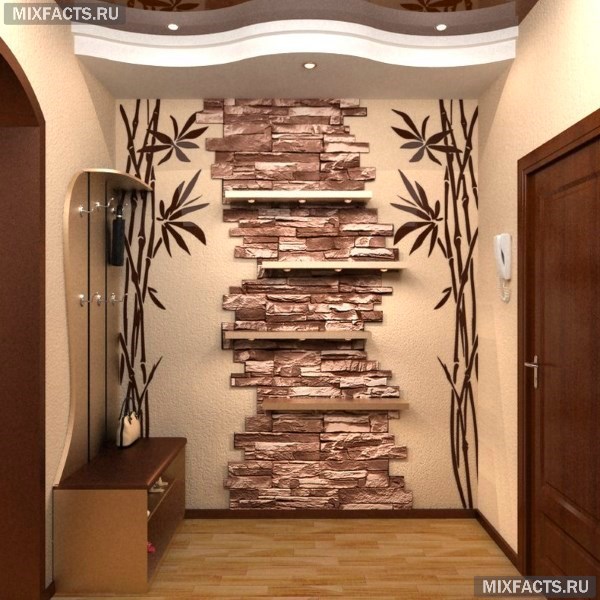
Liquid wallpaper in the bathroom and toilet
for bathroom and toilet room, whether you have them separate or not, liquid cellulose wallpaper is best suited, as they regulate air humidity well, which is important for rooms where water is most often used. With the help of liquid wallpaper, you can easily create an aquarium wall with beautiful multi-colored fish or simply limit yourself to blue and blue colors. The division of zones will be relevant, where part of the wall near the bathroom will be tiled, and the wall free from direct contact with water will be decorated with this wallpaper.
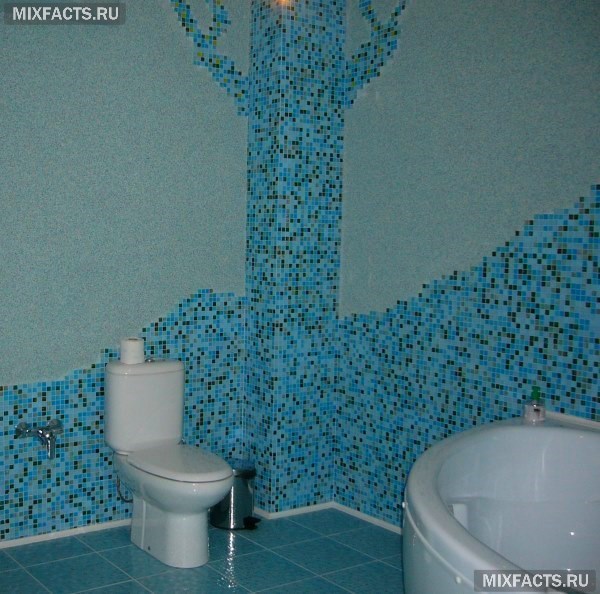
Liquid wallpaper in the kitchen
Any type of liquid wallpaper will harmoniously fit into the interior of your kitchen, you just need to correctly choose the color and texture. The most versatile option is considered to be cellulose-silk wallpaper, which combines practicality and beauty. In addition, with the help color solution it is easy to separate the working area and the eating area, as well as create a beautiful ornament with coffee elements or images of fruits.


Liquid wallpaper in the bedroom
Both silk and cotton wallpapers are suitable, then the walls of your bedroom will truly breathe. With the help of liquid wallpaper, you can beautifully highlight the area above the bed, or vice versa - opposite bed. In some cases, some kind of floral ornament or coffee shades looks very good. Try to choose calm bright hues without sharp lines and bright patterns, so that harmony is maintained in the bedroom and the atmosphere helps to relax after a hard day and gain strength before a new good morning.
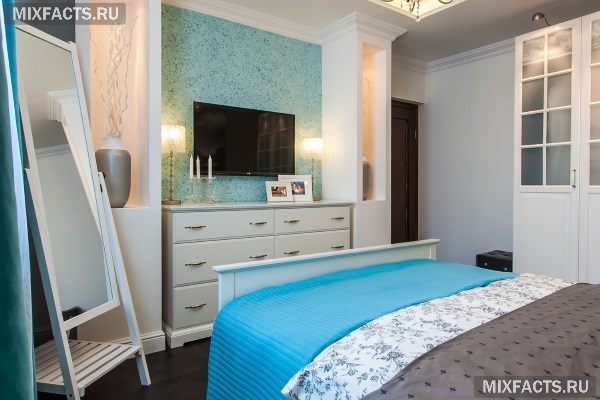
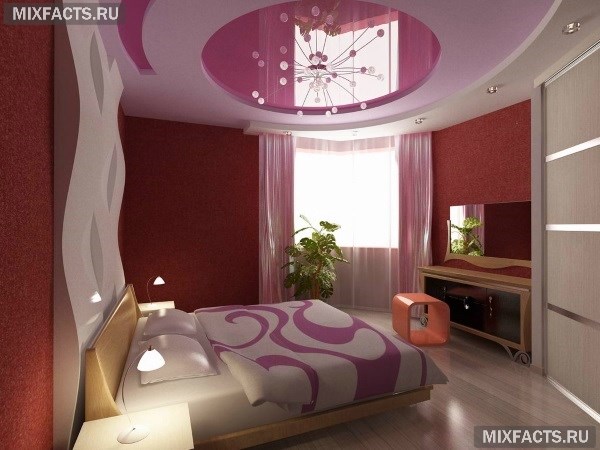
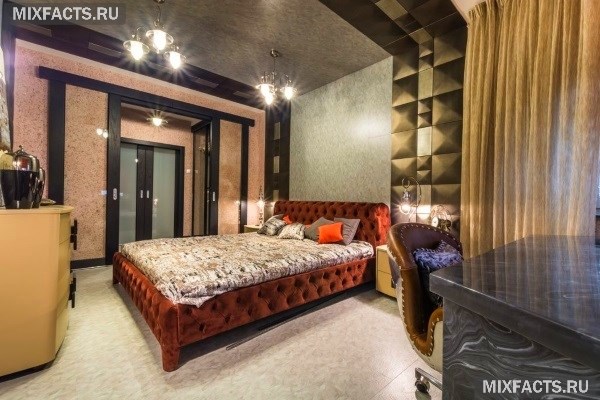

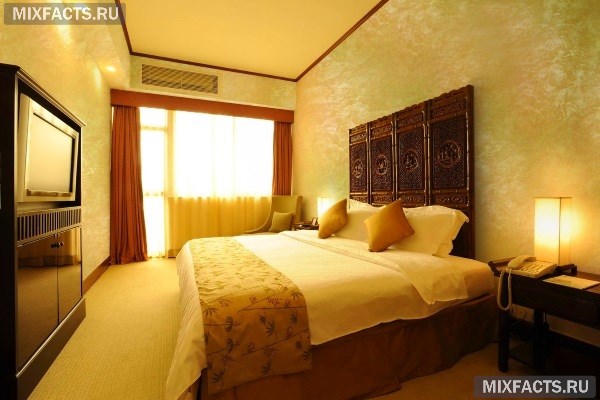
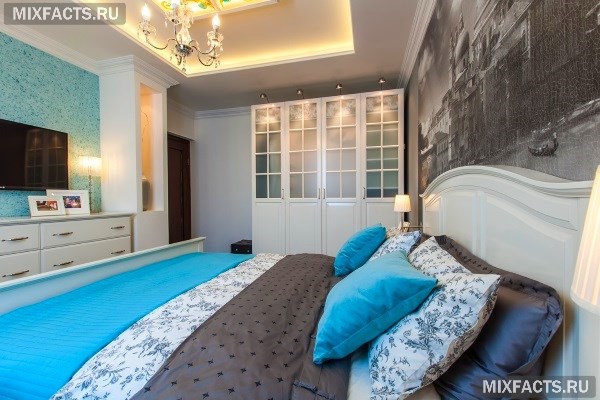
Liquid wallpaper in the children's room
Cotton liquid wallpaper is best, as it is warm to the touch and almost 100% natural. It is best to use 2 types of liquid wallpaper to separate the work area where the child does homework from the recreation area. But it will also look good to have a neutral wallpaper pattern on the entire wall, as the child grows, his preferences change, he may think about rearranging the room, in which case liquid wallpaper is best suited.

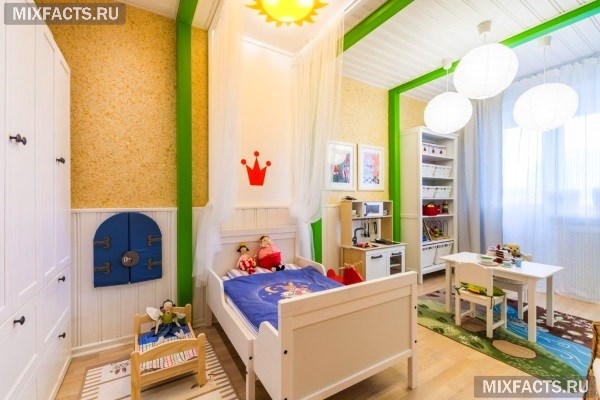

Liquid wallpaper in the living room
Silk wallpapers will look good, since it is in them that the high content of silk will create the effect of luxury and softness of the walls. It is in the living room that you can create a unique pattern on one of the walls using liquid wallpaper, making the interior truly unique. Silk liquid wallpaper looks very nice in combination with panels or frescoes, giving the living room a unique atmosphere.
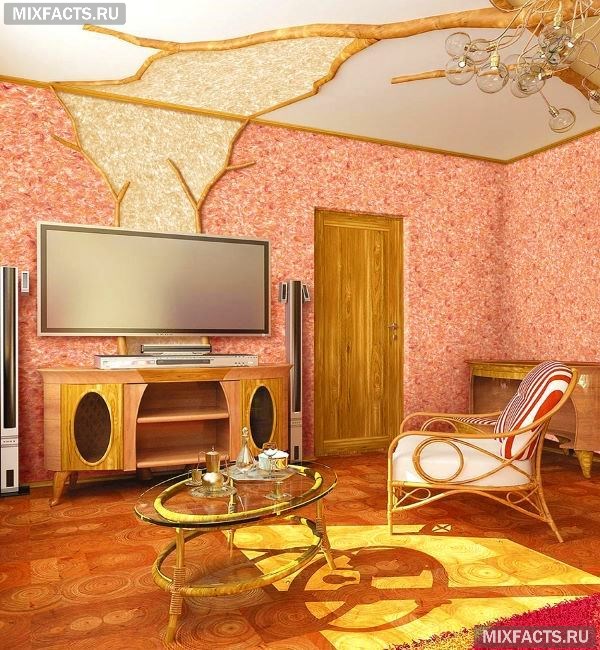
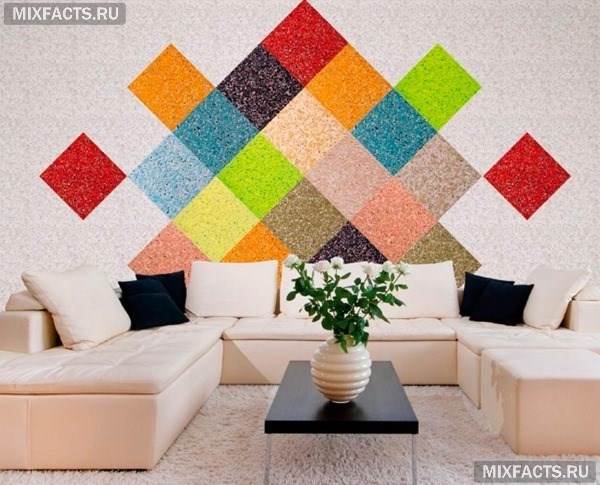
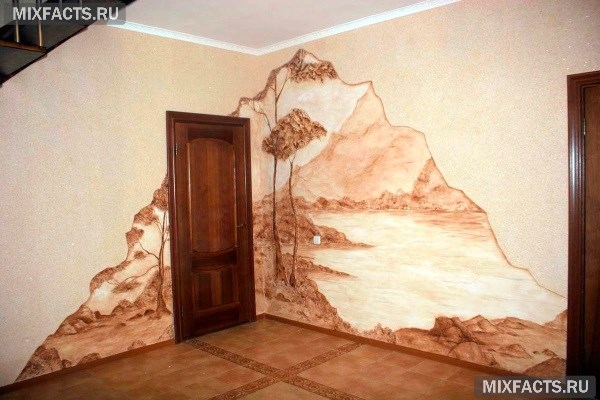


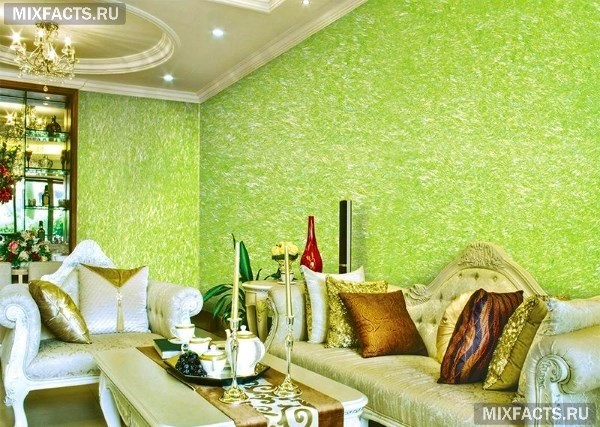
Liquid wallpaper is a beautiful, versatile and practical material for decorating walls in a house. Even if you live in the most ordinary apartment, you can make the interior of any room unique and inimitable thanks to modern finishing materials.
Again, I welcome all dear regular readers and guests of the site. So I thought to write such an interesting and useful for you.
And I decided to tell you about what liquid wallpaper is - as a finishing material, they are very good. Liquid wallpaper is used for interior decoration walls and ceilings. They behave especially well in rooms with high humidity (not a bathroom) and unheated rooms. Very often they are used when covering difficult geometric surfaces and not particularly smooth walls.
What is liquid wallpaper. General concepts
For those who are engaged in finishing their balcony or loggia, I recommend taking a closer look at this view. decorative finishes. And for my part, I will try to fully answer the question - "what is liquid wallpaper?". To begin with, I want to note that the liquid wallpaper itself, as such, refers to decorative plaster created on the basis of textile and artificial cellulose fibers. Also, they already include glue and various decorative elements. In the process of application itself, this material is a homogeneous mass, quite plastic. Due to this, liquid wallpaper is very convenient to apply and it is easy and simple to work with them even for a beginner in this matter. By the way with decorative tiles it is also easy to work for balconies and loggias.
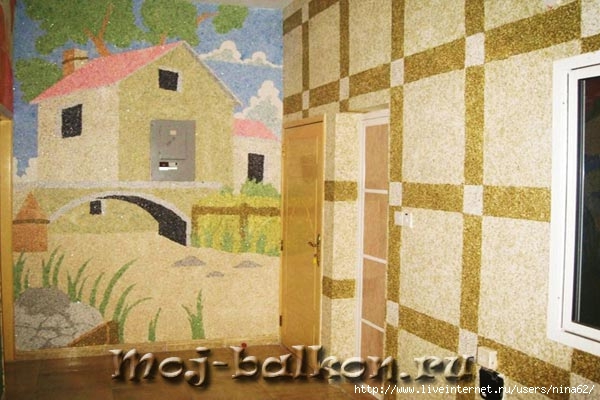
In finished form (after drying), this material looks like seamless coating with a certain textile texture (if it is a textile filler). Any textile material, by the way, has such positive qualities as sound absorption, thermal insulation, and is also resistant to the formation of microcracks. Also, their positive properties include resistance to sunlight and antistatic, which does not allow the wallpaper to accumulate dust. All this is achieved thanks to a scrupulous selection of components that are part of the liquid wallpaper.
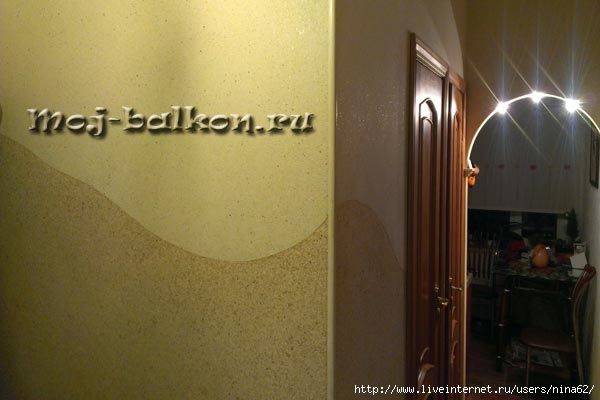
Surface preparation
Before applying this type of wallpaper, the surface must be puttied and primed with acrylic primer, preferably deep penetration. By this action, you protect liquid wallpaper from the effects of aggressive wall components. If suddenly something metal sticks out of the walls, it is better to get rid of it. Subsequently, in this place, rust can easily come out.
Be sure to pay close attention to the primer used: it must be acrylic, white or colorless!!! The use of multi-colored primers is completely unacceptable, as this may lead to the appearance of colored spots on the surface of your new coating.
Preparation for use
So what is liquid wallpaper? Initially, liquid wallpaper looks like a crumbly dry mixture that is packaged in oilcloth packaging (cellophane).
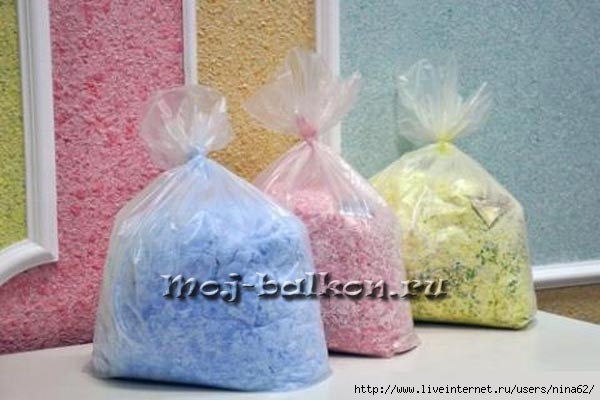
The mixture contains: decorative elements glue component and fiber
You must pour the contents of the package into a deep plastic container (I poured it into a bucket). For this type of wallpaper, you will need about 7 liters of water per package (be sure to read the instructions). On average, one package is enough for 4 square meters covered surface. It is unacceptable to soak part of the package, it must be soaked as a whole.
Pour the contents of the bag into warm water and mix by hand, no particularly thorough mixing is required. It is enough that moisture is distributed throughout the mass of your mixture. After the mass is infused, it must be mixed again before use.
Application technique
For applying this kind of wallpaper, it is recommended to use a plastic float (trowel). Scoop up the material and smooth it over the surface with back and forth movements. Simply put, they are applied and smoothed out like ordinary plaster.
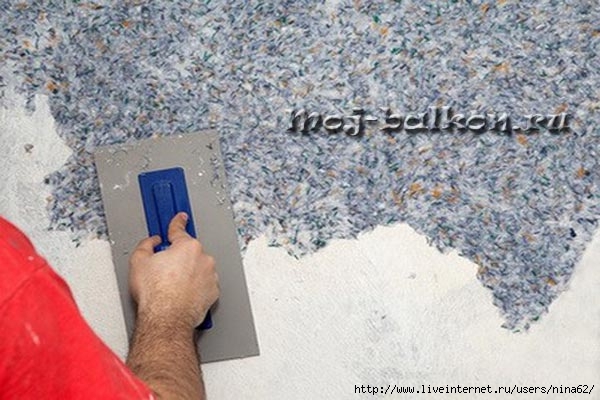
The thickness of the material should be from two millimeters to 1 cm like (I don’t remember exactly). But the bottom line is that you can easily even out decent differences on the walls. It is much easier to work with them than with the notorious plastic panels. True, most people think that plastic is simple and easy to work with, BUT IT'S NOT SO!!!
In more detail, I will talk about how the whole thing is applied. Don't miss this article. There is one very interesting trick. When working with the corners of the wall, the application must be carried out from the very corner. To facilitate the application of the material, it is advisable to moisten the grater with water.
After the end of applying liquid wallpaper, you will probably have a small amount of them. Don't rush to throw it away. Dry the excess material and leave it for later repair.
Drying technique
Liquid wallpaper dries out on average for about two days, while ventilation and draft can be arranged in the room. If it is cold and damp outside, then additional heat sources can be used to quickly dry the material. Please note that liquid wallpaper, like plaster, always does not dry evenly!!! Therefore, in the process of drying, you may have spots. Do not worry, after complete drying, the unevenness of the color will completely go away.
Repair
Liquid wallpaper has the highest maintainability - this means that any fragment that is damaged, whether mechanically or by contamination, you can easily restore. To do this, you need to soak the damaged element with warm water and leave it in this position for several minutes so that the wallpaper becomes plastic. After that, they can be smoothed out with a special plastic grater (trowel). If, however, any part of the liquid wallpaper needs to be replaced, then the dirty fibers are simply removed, and clean ones are applied instead.
I hope that I was able to fully tell you about what liquid wallpaper is and how to use it. There is nothing complicated, cheap, simple, beautiful and tasteful. It remains only to choose the color.
The market for finishing materials is overflowing with goods, but liquid wallpapers occupy a special place here. The walls decorated with this composition amaze with unique patterns, wonderful texture and eye-pleasing colors. They are suitable for partial or overhaul premises, solving all kinds of decorative housing issues.
Liquid wallpaper - advantages and disadvantages
Ideal building materials it has not yet been possible to invent, even excellent liquid wallpapers have minor drawbacks, somewhat narrowing the range of their application. Having considered the main characteristics, you will easily find that the list of advantages they have is much larger in size than a short chapter listing the disadvantages.
Pros of using liquid wallpaper:
- The technique of applying liquid wallpaper does not require special skill. Any builder who has learned how to skillfully handle plastering compounds, a spatula and a mixer is able to cope with the task.
- On open walls, seams are visible, which are formed when pasting a vinyl or paper web. Liquid wallpaper does not have this drawback, they cover the surface with a monolithic layer.
- An ideally even prepared surface for working with liquid wallpaper is not required, the material itself is capable of filling cracks and is well suited for leveling walls, forming a continuous finish.
- Liquid wallpaper contains no toxic substances, so they are used for living rooms of any type.
- This material has good soundproofing properties and retains heat.
- When applying the working composition, there are no scraps, traces of glue, and other waste.
- It is extremely easy to paint walls treated with liquid wallpaper. Any person is able to quickly learn how to transform a living space with wonderful drawings and ornaments.
- Rooms where the surface is covered with white liquid wallpaper in the interior or colored material of this type, mold and fungi do not form on the walls, a harmful greenhouse effect rarely occurs here.
- The decorative layer is quickly removed and renewed if desired, it keeps well in a poorly heated room.
Disadvantages of liquid wallpaper:
- Moisture can destroy the decorative surface over time; liquid wallpaper should be used with caution in bathrooms and kitchens.
- For walls treated with this composition, only dry cleaning is suitable.
- Liquid wallpaper is more expensive than ordinary vinyl, non-woven, paper sheets or simple plaster compositions.
Finishing with liquid wallpaper
People try to decorate houses in an original and unusual way, so traditional roll materials are gradually being replaced by new materials with unique decorative properties. Increasingly, there are interiors where liquid wallpaper reigns in the apartment, easily turning residential standard apartments into a fairy tale. Competent surface preparation and compliance with the rules for applying a decorative composition to the walls will ensure a durable and beautiful coating.
Cotton, cellulose, silk and combined materials are used for work. Silk fiber is considered the most durable, it does not fade, but is more expensive than cellulose compounds. The wall for liquid wallpaper is primed, painted white water-based paint. Dry working powder is diluted with water, left in a bucket and applied with a spatula in the treated area. You can buy ready-made wallpaper in a plastic container. The solution is distributed along the wall with a grater, roller, hopper gun. The composition dries up to 3 days depending on the conditions.
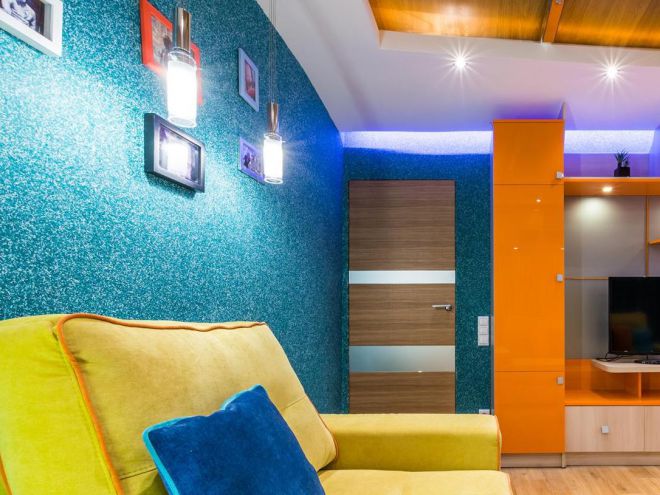
Often, people want to apply liquid wallpaper at home, both for walls and share. If you want to create a complex application, then you must first prepare a template, draw a markup on the surface. The technology for applying the composition to the ceiling does not differ radically from working with walls. Liquid wallpaper is well suited for facing the front surface of suspended structures, for smoothing out differences between levels, emphasizing depth, and decorating the perimeter.
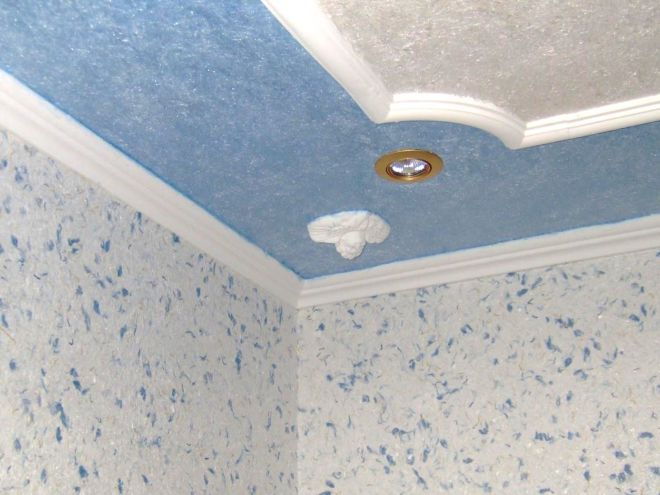
Liquid wallpaper in the interior
With this material, it is easy to create monophonic and multi-colored compositions, to obtain unique divorces and ornate ornaments. Using beautiful color additives, you can apply decorative liquid wallpaper in all rooms, transforming apartments in a different style. A single color dye is suitable for traditional interiors, and when mixed with several components, unexpected and creative colors are obtained, which are used in modern design trends.
This type of decoration in the living room has excellent advantages, it is able to replace rolled canvas, fabric and even stone in the room. Silk liquid wallpaper looks incredibly cozy, soft, comfortable. For the hall, they are expensive, but almost ideal material. Visually, the surface resembles a stylish fabric, the appearance of which depends on the size and color shades of the fibers. Material with large original inclusions highlight accent walls opposite sofas, space near fireplaces, and other special places.

Wallpapers with a heterogeneous structure look good in living rooms. Special additives can cause visual effects, causing unusual sensations. You can get a luxurious living room interior if you include gold or silver threads in the working composition. Some components have the ability to reflect rays. Luminous chips are used over the entire plane or in a limited area, near niches and near the ceiling. Flock and special additional granules add volume to the treated surface, make the walls pleasant to the touch.

In the rest room, it is better to use a gentle range, calm pastel and azure blue tones. Suitable for painting the walls in peach, lilac, green, pink, adored by all girls. Liquid wallpaper in the interior of the apartment in gray-white and traditional beige shades is optimal for. The material of bright yellow and red color will illuminate the room with light, cheer you up in the morning. In you can complement the atmosphere with national ornaments, drawings with a positive plot.
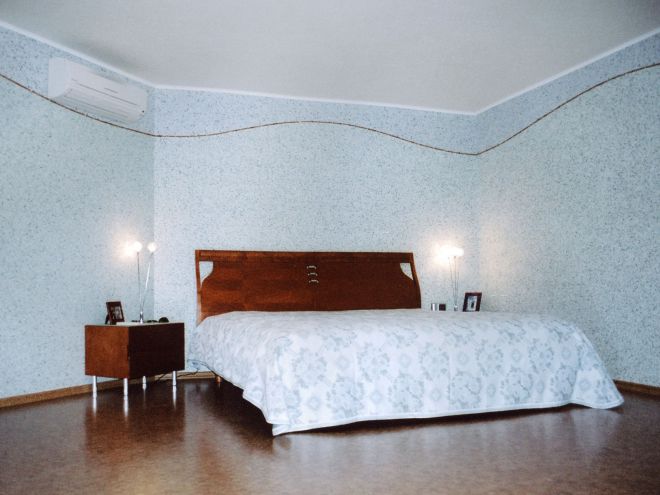
This finishing material does not tolerate strong humidity in the room, but is often used by pre-treating the surface with acrylic or latex varnishes. The resulting layer will protect the walls from splashes and steam, the housewives will be able to safely remove strong dirt with wet wipes and sponges. The most problematic places in the kitchen are covered with tiles, covered with aprons, boldly combining materials. It is easy to choose the desired pattern and shade at the transition points on the wallpaper, using pigments and additives that change the texture.
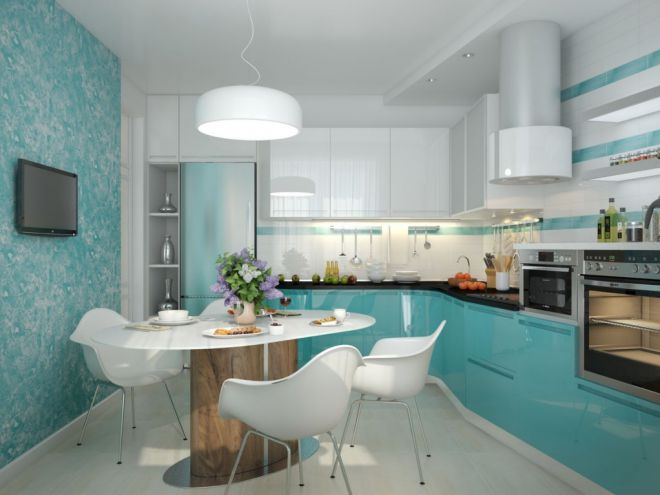
The appearance of the hallway significantly affects the first impression that is created by guests visiting your apartment. Liquid wallpaper in the corridor in the interior of the house fits perfectly into the overall picture. The lower part of the walls in this room is protected with panels or finished with dark compositions so that it is less polluted by street dirt. The transition point is closed with decorative strips of the appropriate design. A monochromatic coating in the hallway is appropriate, it is good for simplicity and is used to better highlight stylish mirrors, paintings, and other decor.

In the bathrooms, the entire room suffers from splashes and steam, for this reason, the design of liquid wallpaper in the interior of the bathroom is rarely used, it requires a balanced approach and protection of the walls with acrylic varnish. It is advisable to line the wet area with ceramics, curtains, and cover it with waterproof panels, excluding condensation and splashes on the rest of the surface. The combination of this material with tiles, marble, stone and mosaic allows you to embody original ideas, creating classic monochrome interiors or painting the walls of the room with fancy patterns.

It is pleasant to touch the surface covered with this material, even a rough-looking wall actually has a soft, delicate and warm texture. Liquid wallpaper with a pattern in the interior will not harm the child, they do not emit volatile hazardous substances. The walls are easy to restore, correcting the consequences of children's pranks, removing damaged fragments, leveling them with a spatula. The interior of the room can be pleasantly changed with the help of magical patterns, adding decorative sparkles to the solution, experimenting with the colors of the wallpaper by mixing different pigments.

The modern market for building materials for interior decoration is amazing. Relatively recently, liquid wallpapers have also become available for purchase, the use of which, in combination with a creative approach to business, will make walls and ceilings not just beautiful, but fabulous and unique. Such possibilities are due to the composition, properties and features of the technology of applying the material to the surface to be coated.
What is liquid wallpaper?
The new type of wallpaper is strikingly different from the usual roll wallpaper, which has been used for many decades. Products of this plan are more often categorized.
The product can be sold in the form of dry mixes or semi-liquid formulations. The latter go on sale ready for use, dry must be mixed with the addition of water.
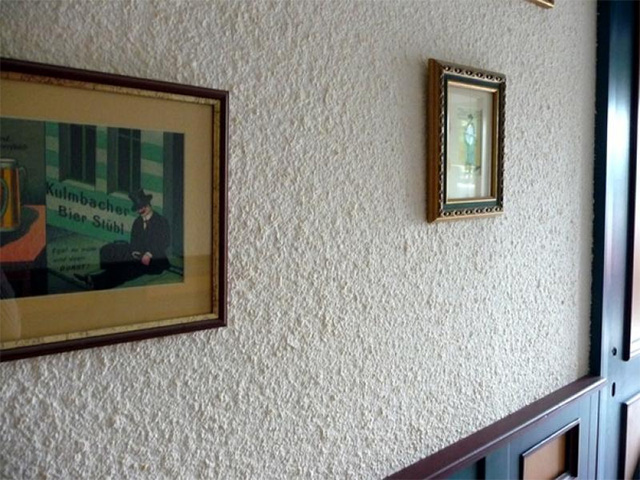
The working composition is applied to the surface by means of hand tool or a spray gun operating from the mains.
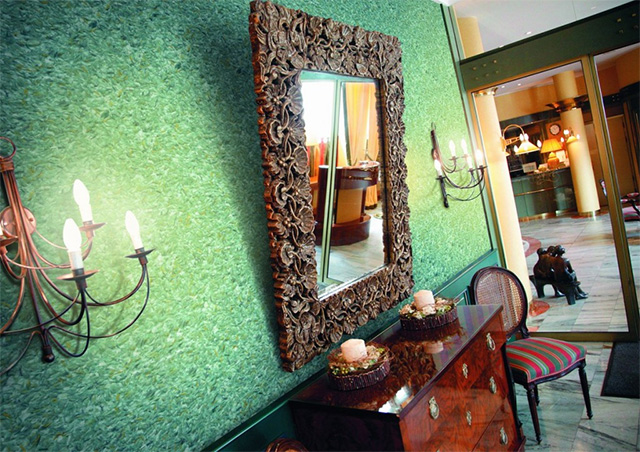
Material types
Despite the wide color scheme, liquid wallpaper is divided into three types. The category defines the type of raw material used in the manufacture of the product. The types of material are as follows:
- Silk wallpaper;
- Cellulosic;
- Silk-cellulose.
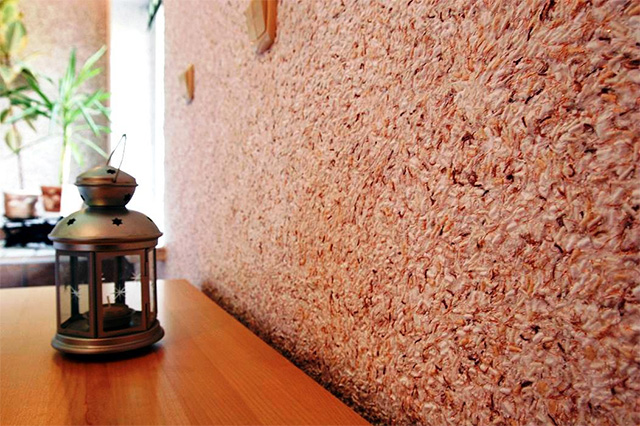

Through the use of dyes, elegance, beauty and extravagance of the facing layer are achieved.
Silk
The basis of this type of wallpaper is silk fibers. Walls and ceilings lined with such a composition are not afraid of the influence ultraviolet radiation able to maintain their best view for a long time.

Another important advantage is resistance to sunlight, which minimizes the likelihood of fading and loss of the primary shade.




















